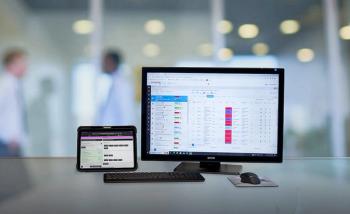
Could a New Deep Learning Tool Enhance CT Detection of Pancreatic Cancer?
New research reveals that an emerging deep learning tool had comparable sensitivity and specificity to radiologist assessment of contrast-enhanced computed tomography (CT) scans for pancreatic cancer, and a 74.7 percent sensitivity rate for tumors smaller than 2 cm.
Noting that nearly 40 percent of pancreatic cancer tumors smaller than 2 cm are missed on computed tomography (CT) assessment, the authors of a new study suggest that an emerging deep learning tool could have an impact in improving detection.
In the study, conducted in Taiwan and published earlier today in
The researchers found that the deep learning tool had an 89.7 sensitivity rate and a 92.8 percent specificity rate for detecting pancreatic cancer in the nationwide validation test set. In local test set data drawn from 109 patients with pancreatic cancer at a tertiary referral center and 147 control participants, the study authors noted no significant differences in sensitivity between assessment by attending radiologists (96.1 percent) and the deep learning tool (90.2 percent).1
“This study developed an end-to-end, deep learning-based, computer-aided detection (CAD) tool that could accurately and robustly detect pancreatic cancers on contrast-enhanced CT scans. The CAD tool may be a useful supplement for radiologists to enhance detection of (prostate cancer).” wrote study co-author Weichung Wang, Ph.D, who is affiliated with the National Taiwan University Center for Artificial Intelligence and Advanced Robotics, and colleagues.
The study findings also suggested promising potential for the deep learning tool with respect to smaller pancreatic lesions that are frequently missed on CT, according to the study authors.
“The comparable sensitivity between the CAD tool and experienced radiologists at a tertiary referral center supports the idea that the CAD tool might be useful for reducing the miss rate attributed to disparities in expertise,” explained Wang and colleagues. “ … Previous research showed that approximately 40 percent of (pancreatic cancers) smaller than 2 cm were missed on CT scans whereas our CAD tool achieved 87.5% and 74.7% sensitivity for (pancreatic cancers) smaller than 2 cm in the local and nationwide test sets respectively.”1,2
In an
In regard to study limitations, the authors concede that the sensitivity rate findings coming from a tertiary referral center for prostate cancer may limit extrapolation of the data to general settings. They also noted a lack of access to radiologist reports from the nationwide data set and a predominantly Asian population in the test set that was fairly homogenous in terms of ethnic and racial diversity. The control group lacked patients with pancreatic abnormalities other than prostate cancer, according to the study authors.
References
1. Chen PT, Wu T, Wang P, et al. Pancreatic cancer detection on CT scans with deep learning: a nationwide population-based study. Radiology. Available at:
2. Dewitt J, Devereaux BM, Lehman GA, Sherman S, Imperiale TF. Comparison of endoscopic ultrasound and computed tomography for the preoperative evaluation of pancreatic cancer: a systematic review. Clin Gastroenterol Hepatol. 2006;4(6):717-25; quiz 664.
3. Aisen AM, Rodrigues PS. Deep learning to detect pancreatic cancer at CT: Artificial intelligence living up to its hype. Radiology. Available at:
Newsletter
Stay at the forefront of radiology with the Diagnostic Imaging newsletter, delivering the latest news, clinical insights, and imaging advancements for today’s radiologists.

























